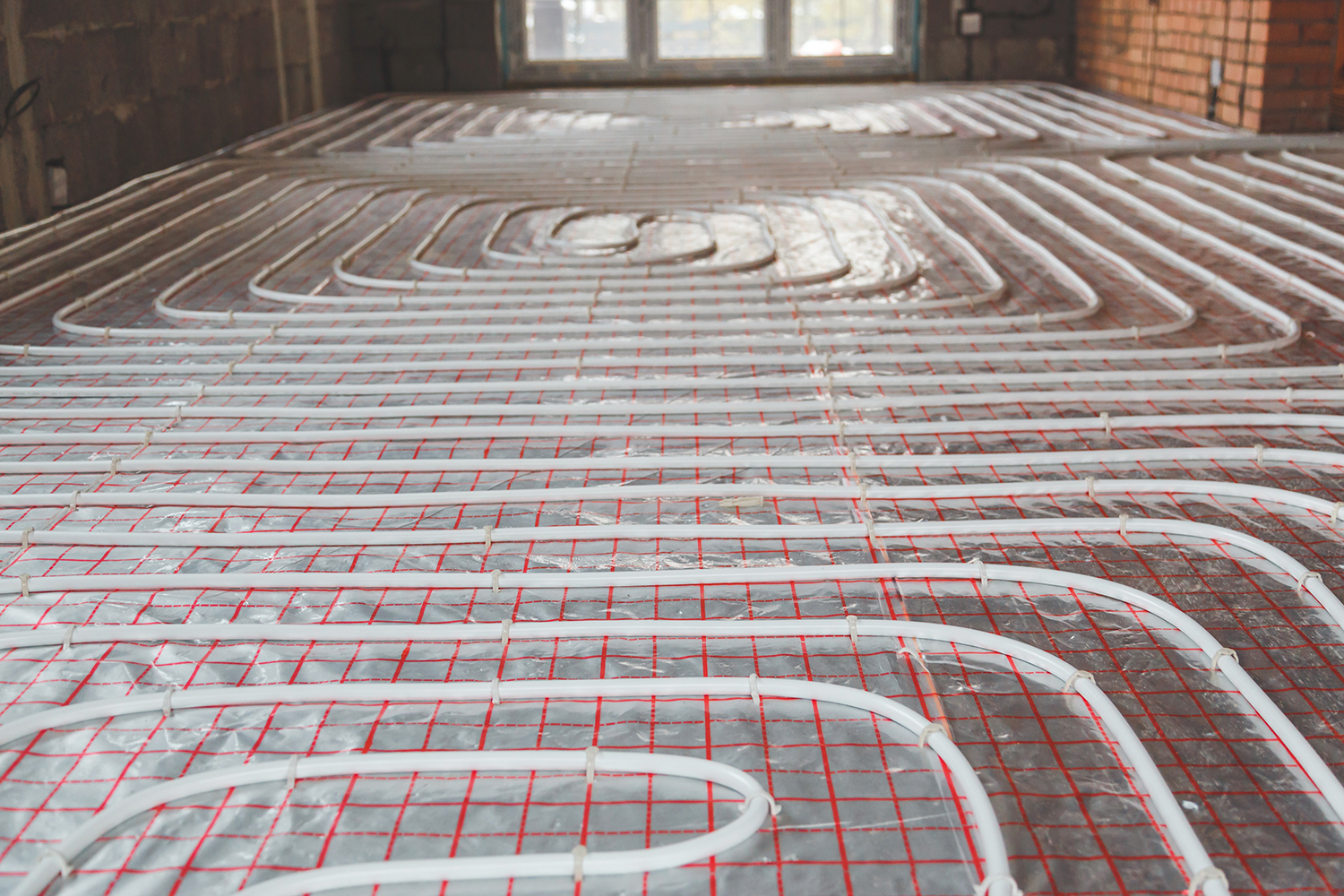8 Common Misconceptions about Radiant Heat
Are you considering radiant heat but are unsure because of all the conflicting info on the internet? We’re not surprised. There’s tons of misinformation floating around about radiant heating. Let us help you sort out the facts from the lies. We’ve compiled the most common radiant heating lies & myths we’ve heard in our many years of installing radiant heat.
1. Underfloor heating can only be used as a supplemental heat source
Yes, it is true that some underfloor heating systems are not appropriate for use as the primary heat source; it is not true of all radiant heating systems. An experienced radiant heat designer will be able to design an underfloor heat system that radiates enough heat to keep the home in total comfort as the sole heat source. With flexible options, it is easy to vary heat output to meet the needs of the home. With insulation layers, you can further reduce power requirements yet deliver enough heat into the room to maintain total comfort.
2. Radiant heating is too expensive
Many people choose not to install radiant heating because they believe it’s something they could never afford. Maybe you fall into this category; you’ve experienced it in other homes (or hotels), but you have it in your head that you could never afford. Well, think again!
Radiant heating has evolved, and new technology makes it efficient and easier to install than ever. Of course, the exact cost of purchasing and installing radiant heat depends on your system’s size and design. Electric systems typically cost less up front but have a higher operating cost. Because they rely on electricity, you can expect a rise in your utility bill. Water systems often are more expensive up front but cost less in the long run, as they have little effect on your utility bill.
Innovative design options will also bring down the cost of installation, so enlisting the help of an experienced radiant heat designer will surely save you money.
3. Radiant heat can only be installed under tile
While it’s true that most homeowners choose to install radiant heat under tile or concrete, underfloor heat can be installed under all types of flooring. Homeowners often choose to install radiant heat under tile and concrete floors because they feel cold to the touch, and they want to eliminate the chill. However, it’s a little known fact that tile and carpet are actually the exact same temperature (when in the same area of the same home). And this is true for all types of flooring. Tile and concrete only feel colder because they’re a better conductor, so they actually pull the body heat from us through our feet, tricking us into believing that the floor is a colder temperature. Underfloor radiant heat is an effective way of offsetting this effect.
Another reason why people often believe that radiant heat can only be installed under tile or concrete is because of the belief that it may damage wood or carpet flooring. However, this is untrue. Which leads us to our next myth…
4. Radiant heat will damage my floors
Many people believe that radiant heat will warp their floors. The truth is that radiant heat carries no moisture and is completely safe for all flooring types when used at the proper temperature. Most laminate, carpet, vinyl, and tile floors have maximum floor temperatures set by their manufacturer. While it’s highly unlikely that you would ever set your heating system to a temperature high enough to actually damage the floor, you simply program the pre-set temperature limit into your thermostat, and you never have to worry.
5. Radiant heating is only for new homes
There are two main types of underfloor radiant heating: electric and hydronic. Although hydronic underfloor heating is most often installed in new builds, it is becoming increasingly popular as an addition or retrofit to existing homes. Afraid this addition will raise the floor height or negative affect the appearance of your home? Keep reading…
6. Underfloor heating raises the floor height
Because the radiant heat components are installed directly beneath your floor, there may be a minimal impact to the floor height. However, very often, there is no change at all. The heating components can be installed directly into the subfloor or within a layer of tile adhesive. And when it does affect the floor height, it’s usually by 3/8 of an inch or less. In cases where radiant heating may raise the floor height an unreasonable amount, the heating can be installed in the walls or ceilings. Which brings us to our next myth.
7. Radiant heating can only be installed in the floor
With an experienced designer, radiant heat can be installed in the walls and ceilings. This method of installing radiant heat can be a real hero in existing homes as it requires less construction & renovation.
8. Radiant heating is likely to break
With a quality system and an experienced installer, you should have a reliable system with few issues. Newer radiant heat systems are low maintenance and offer lifetime warranties. When a problem does arise, it doesn’t need to be major. Our experienced heating technicians can diagnose and repair most issues with minimal disruption to your home.
Trends come and go quickly. The comfort from a radiant heated floor is guaranteed for life and sure to stay in style. This is an investment you’re not likely to regret! If you’re considering radiant heating for your home, give us a call. We can design the perfect system for your home and offer no-obligation quotes.
*Serving the San Francisco and surrounding areas, Gotelli Boilers & Heating offers licensed and insured, full-service radiant heat and boiler solutions. We’re the trustworthy choice in the Bay Area, with over 20 years of experience, delivering incredible service and emergency repairs 24/7.


No responses yet